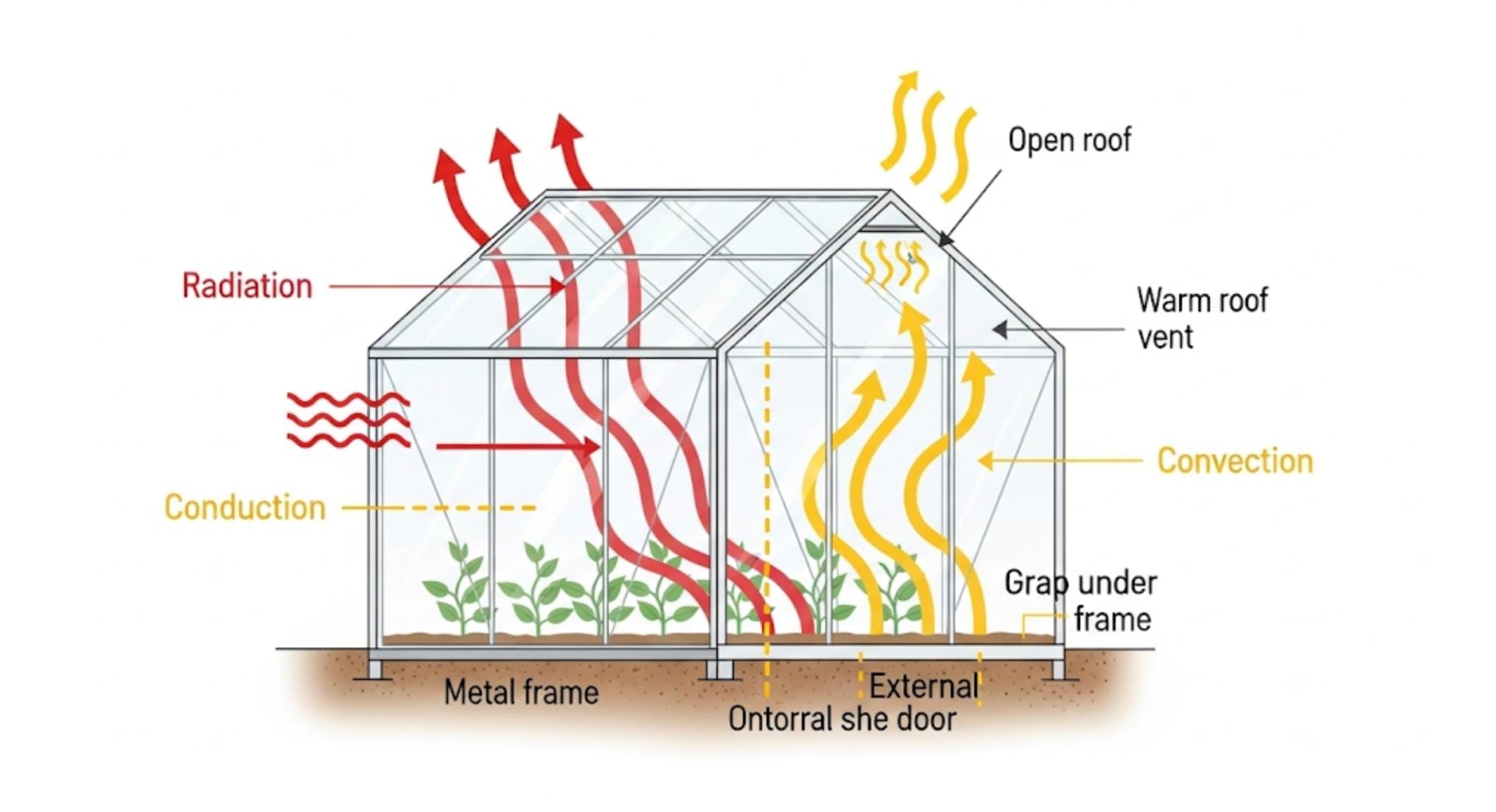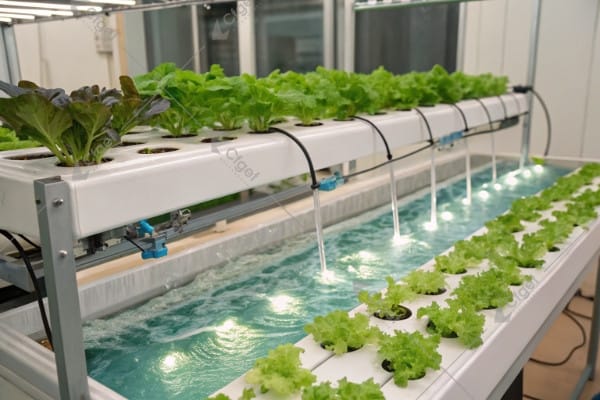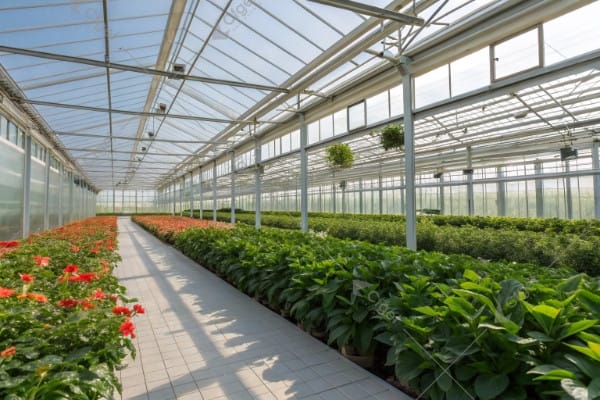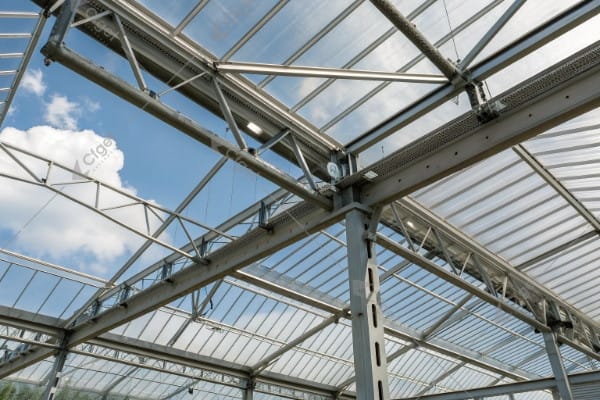Are you struggling with outdoor blueberry cultivation? Weather unpredictability, pests, and short growing seasons can devastate your harvest. A greenhouse solves these problems while extending your production period.
Successfully growing blueberries in a greenhouse requires specific soil pH (4.0-5.5), adequate light exposure, proper temperature management (including chilling hours), controlled humidity, and appropriate greenhouse structure selection based on your climate and production goals.
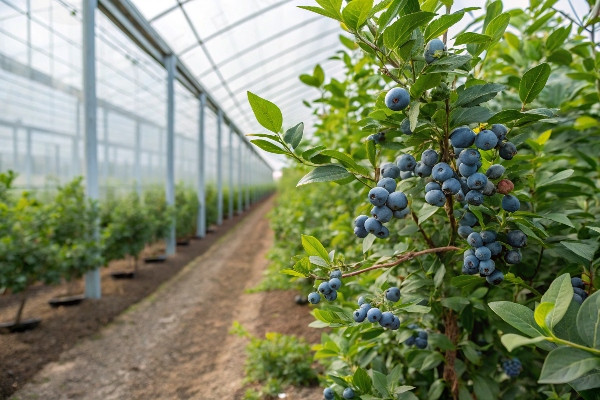
In my 28 years at CFGET, I’ve helped countless growers establish successful blueberry operations. I remember visiting a client in Thailand who transformed from struggling with seasonal outdoor harvests to year-round production using our greenhouse system. The key to their success—and yours—lies in understanding several critical requirements. Let me guide you through each one.
Don’t Miss:——Everything You MUST Know Before Buying a Polycarbonate Greenhouse
You might like:——Unlock Blueberry Potential: Why a Greenhouse is Ideal for Growing?
Managing Acidic Soil Conditions in a Greenhouse Environment?
Many growers fail with blueberries because they overlook the critical soil pH requirements. I’ve seen beautiful greenhouses with dying plants simply because the soil was too alkaline for blueberry cultivation.
Blueberries require acidic soil with pH between 4.0-5.5. In a greenhouse environment, this means using appropriate growing media (peat moss, pine bark), regular pH monitoring, acidifying fertilizers, and potentially sulfur amendments to maintain optimal acidity levels.
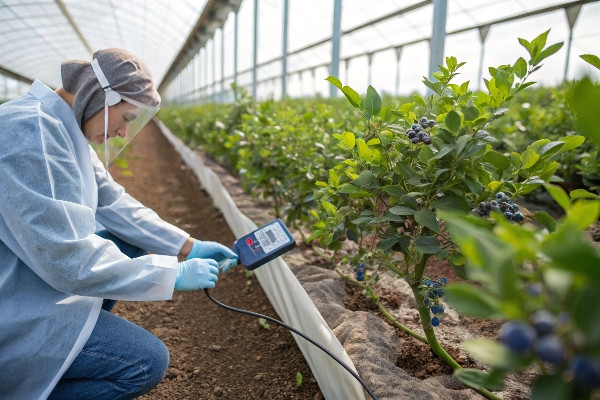
Growing blueberries successfully starts with understanding their unique soil requirements. Unlike many other crops, blueberries are acid-loving plants that evolved in forest environments with naturally low pH soils. When I first started designing greenhouses for blueberry cultivation, I quickly realized that soil management becomes even more critical in a controlled environment.
For container-grown blueberries, which is the most common method in greenhouses, the growing medium composition is crucial. I recommend a mix containing at least 50% peat moss, which naturally has a low pH, combined with pine bark, perlite, or coarse sand for proper drainage. This combination provides both the acidity and excellent drainage that blueberry roots require.
Monitoring is essential in greenhouse environments where conditions can change quickly. I advise my clients to test soil pH at least monthly using reliable testing kits. For larger operations, investing in digital pH meters saves time and improves accuracy. When I visited a client in Malaysia, their plants were showing yellowing leaves despite following all other recommendations. A quick pH test revealed their irrigation water was gradually alkalizing the soil—a common issue easily corrected with acidifying agents.
Water quality also significantly impacts soil pH. If your water source is alkaline (above pH 7), you’ll need to acidify it before irrigation. Citric acid or phosphoric acid can be used, but I’ve found that food-grade vinegar (5% acetic acid) at 2-4 tablespoons per gallon works well for smaller operations. For commercial greenhouses, I recommend automated injection systems that maintain consistent water pH.
Fertilization strategies must complement your pH management efforts. Traditional fertilizers often raise pH, so I specifically recommend fertilizers formulated for acid-loving plants. Ammonium sulfate and ammonium nitrate are excellent nitrogen sources that help maintain acidity, while avoiding nitrate-based fertilizers that can raise pH. A typical regimen I suggest is applying a slow-release acidic fertilizer at planting, followed by regular feedings with water-soluble acidic fertilizers at half the strength recommended for outdoor plants.
Light, Temperature & Chilling Hours: Critical Factors for Blueberries?
I’ve seen costly greenhouse investments fail because growers didn’t account for blueberries’ specific light and temperature needs. One client in Dubai struggled until we implemented proper light management and artificial chilling.
Blueberries require 6-8 hours of direct sunlight daily, temperatures between 65-85°F (18-29°C) during growing season, and specific chilling hours (150-1200 hours below 45°F/7°C depending on variety) to break dormancy and produce fruit. Greenhouse systems must be designed to meet these specific requirements.
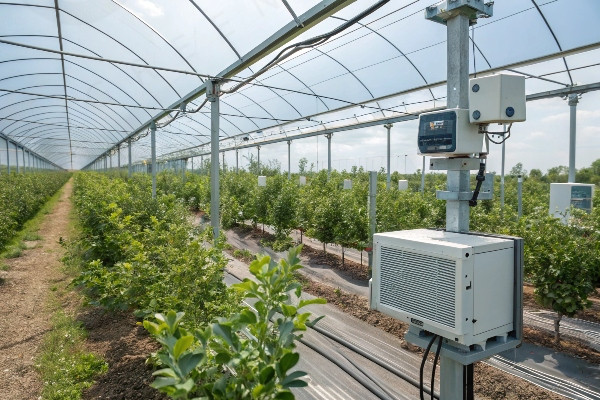
Light and temperature management represents one of the most complex aspects of greenhouse blueberry production. Through my experience helping growers across different climate zones, I’ve learned that balancing these factors directly determines your yield and fruit quality.
Light intensity and duration significantly impact blueberry growth and fruiting. While blueberries need substantial light, they can suffer from excessive exposure in greenhouse environments where temperatures can spike. In our greenhouse designs, I typically recommend 30-50% shade cloth during summer months in tropical and subtropical regions to prevent leaf scorch and fruit scalding. For northern climates with shorter winter days, supplemental lighting with LED grow lights specifically tuned to blueberries’ photosynthetic needs can extend the growing season. I recall installing a customized lighting system for a client in Sweden that increased their winter production by nearly 40%.
Temperature management becomes especially critical because blueberries have dual temperature requirements: they need warmth for active growth but also require a cold period to break dormancy. For active growth phases, maintaining day temperatures between 70-80°F (21-27°C) and night temperatures around 60-65°F (15-18°C) creates optimal conditions. This day-night temperature differential, known as DIF, stimulates stronger growth and better flowering.
The chilling requirement presents a unique challenge for greenhouse growers. Different blueberry varieties need varying amounts of exposure to temperatures below 45°F (7°C) to break dormancy and produce fruit. Southern highbush varieties typically require 150-800 chilling hours, while northern highbush may need 800-1200 hours. For locations without natural chilling periods, I’ve implemented several solutions:
For smaller operations, I recommend selecting low-chill varieties like ‘Emerald’, ‘Jewel’, or ‘Star’ that can produce with minimal chilling. For larger commercial clients, we’ve designed specialized cooling sections within the greenhouse complex where plants are rotated through a controlled chilling period. In extreme cases, like a project I completed in Qatar, we installed industrial refrigeration units programmed to gradually reduce temperatures to mimic natural winter conditions.
Temperature monitoring systems are non-negotiable for serious blueberry greenhouse operations. Modern systems I typically install include multiple temperature sensors at different heights and locations, connected to automated ventilation, heating, and cooling systems. These maintain ideal conditions while maximizing energy efficiency. For example, a recent installation in Vietnam uses automated thermal screens that deploy at night to retain heat during cooler months and reflect excess solar radiation during hot periods.
Ventilation and Humidity Control for Healthy Blueberry Bushes?
Poor air circulation and humidity management lead to devastating fungal diseases in blueberry greenhouses. I’ve helped recover many operations that were losing entire crops to preventable issues like botrytis and powdery mildew.
Blueberries thrive with relative humidity between 50-70%, consistent air movement, and proper ventilation to prevent disease. A well-designed greenhouse requires both passive ventilation (vents, roll-up sides) and active systems (circulation fans, exhaust fans) working together with humidity monitoring.
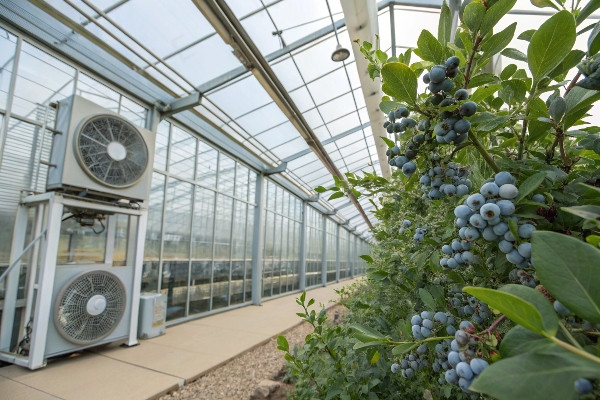
Ventilation and humidity control are often underestimated aspects of greenhouse blueberry production, yet they’re absolutely critical for plant health and fruit quality. Through decades of greenhouse design experience, I’ve seen firsthand how proper air management prevents disease while improving pollination and overall plant vigor.
Blueberries present a particular challenge because they require consistent moisture but are susceptible to fungal issues when humidity remains too high for extended periods. The ideal humidity range of 50-70% allows for proper transpiration without creating conditions favorable for pathogens. I always design ventilation systems based on both the greenhouse volume and the specific climate conditions of the location.
For natural ventilation1, roof vents should comprise at least 15-20% of the floor area. In our designs for tropical regions, I typically incorporate continuous ridge vents combined with roll-up or drop-down side walls that can be adjusted seasonally. This passive system creates chimney-effect air movement that’s both energy-efficient and effective. I remember installing such a system for a client in Thailand who previously struggled with humidity-related diseases; their fungicide applications dropped by over 60% after implementation.
However, natural ventilation alone is rarely sufficient. Horizontal air flow (HAF) fans are essential components I include in all my blueberry greenhouse designs. These fans, positioned strategically to create a complete circulation pattern, ensure there are no stagnant air pockets where humidity can accumulate. For larger greenhouses, I recommend one 1/15 HP fan per 2,000 square feet, positioned to create a continuous oval air pattern.
Humidity management becomes especially challenging during certain growth stages. During flowering, excessive humidity can prevent proper pollination, while during fruit ripening, it can lead to fruit cracking and fungal infections. For precise control, I often implement integrated humidity management2 systems that coordinate dehumidifiers, ventilation, and heating. These systems make small, continuous adjustments rather than large corrections that stress the plants.
In colder climates where ventilation during winter presents energy efficiency challenges, I’ve had success with heat recovery ventilators. These systems, while initially more expensive, exchange stale, humid greenhouse air with fresh outside air while recovering up to 80% of the heat energy. For a client in Poland, this solution reduced their heating costs by approximately 30% while maintaining ideal humidity levels throughout winter.
The monitoring component is equally important as the mechanical systems. Modern sensor networks I install provide real-time humidity data at multiple heights and locations throughout the greenhouse. This information feeds into automated control systems that can make adjustments before conditions become problematic. For larger operations, I recommend systems that send alerts when conditions approach dangerous levels, allowing for manual intervention when necessary.
Choosing the Right Greenhouse Structure and Size for Blueberries?
Selecting the wrong greenhouse structure can lead to years of frustration and reduced yields. I’ve consulted for growers who invested in unsuitable designs and faced continuous struggles with environment control and accessibility.
The ideal blueberry greenhouse balances environmental control, durability, and cost-effectiveness. Factors include local climate (wind, snow load, temperature extremes), planned growing method (in-ground vs. containers), required growing space (5-7 sq. ft. per mature plant), and budget constraints.
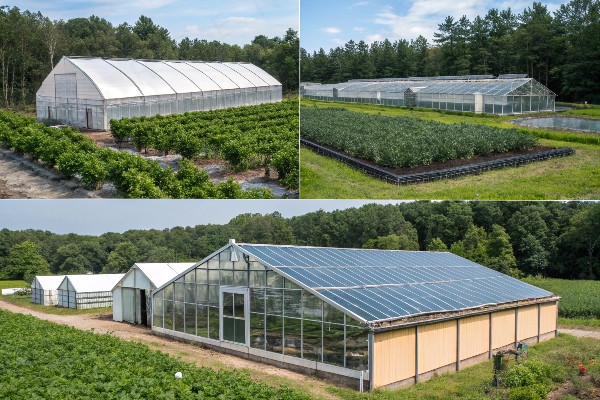
Selecting the appropriate greenhouse structure represents one of the most significant and long-lasting decisions you’ll make for your blueberry operation. Through my work designing greenhouses across vastly different climates, I’ve learned that the perfect structure varies dramatically based on local conditions and production goals.
The greenhouse covering material3 significantly impacts your growing environment and operational costs. For blueberry production, I typically recommend polycarbonate panels for colder climates due to their excellent insulation properties and durability. A twin or triple-wall polycarbonate provides better temperature control than single-layer materials, reducing heating costs by up to 40% in northern regions. For warmer areas with mild winters, high-quality polyethylene film offers cost-effective coverage while allowing excellent light transmission. Many of my clients in Southeast Asia use specialized diffused light polyethylene that spreads light more evenly through the plant canopy, improving lower fruit production.
Height is a critical consideration often overlooked by new growers. Blueberry bushes can reach 5-7 feet tall when mature, and proper air circulation requires additional clearance. I recommend a minimum sidewall height of 8 feet and a center height of at least 12-14 feet for commercial operations. This extra height creates a buffer zone of air that moderates temperature fluctuations and allows for better vertical air circulation. In a recent project in Vietnam, we designed a 16-foot center height structure that reduced daytime temperature spikes by nearly 8°F compared to their previous lower greenhouse.
The structural design must account for your specific climate challenges. For areas with high snow loads, I design steeper roof pitches (typically 6:12 or greater) with reinforced trusses. In hurricane-prone regions, we implement specialized anchoring systems and stronger framing materials. For a client in the Philippines facing typhoon risks, we created a modular design with additional cross-bracing that has withstood multiple severe storms without damage.
Space planning requires careful consideration of blueberry growing habits. Each mature blueberry bush needs approximately 5-7 square feet of growing space in a greenhouse environment. However, proper planning must also account for aisle space, which typically requires 30-40% of the total greenhouse area. For efficient operations, I recommend aisle widths of at least 3 feet for hand harvesting and 5-6 feet if you’ll be using any mechanical assistance. The greenhouse length-to-width ratio also impacts efficiency, with 2:1 or 3:1 ratios typically providing the best balance between environmental control and operational workflow.
Budget considerations often lead to compromises, but certain aspects shouldn’t be sacrificed. I advise clients to invest in quality structural components and environment control systems first, as these are difficult and expensive to upgrade later. For growers with limited initial budgets, I often recommend a phased approach—starting with a smaller, well-equipped structure that can be expanded as production proves profitable. A client in Kazakhstan started with a 5,000 square foot pilot greenhouse with premium environmental controls, and after proving the concept, expanded to 30,000 square feet using the same control systems scaled up, saving significantly on the total investment.
Accessibility features dramatically impact long-term operational efficiency. Wide, reinforced doorways that accommodate equipment, proper concrete perimeter foundations that prevent pest entry, and strategically placed water access points can reduce labor costs throughout the greenhouse lifespan. These seemingly minor details can impact your production costs by 15-20% over time, as I’ve documented with clients who upgraded from basic to optimized greenhouse designs.
Conclusion
Setting up a successful blueberry greenhouse requires careful attention to soil acidity, light, temperature, ventilation, and structure selection. By addressing these key requirements, you’ll create optimal growing conditions that maximize yield and quality while extending your harvest season.
Discover how natural ventilation can enhance air circulation and reduce humidity-related issues in blueberry greenhouses, improving plant health. ↩
Explore this resource to learn effective strategies for managing humidity, crucial for preventing diseases and ensuring healthy blueberry plants. ↩
Find out which covering materials are most effective for blueberries, impacting insulation, light transmission, and overall plant growth. ↩
